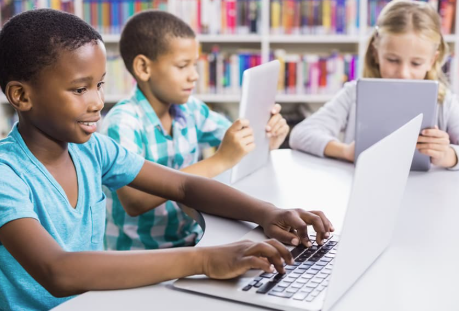Introduction
Peer learning—where students collaborate to share knowledge, solve problems, and learn together—has always been a key part of education. Traditionally, it occurred in study groups, classroom discussions, or informal meetups. Today, technology is transforming this approach, making peer learning more dynamic, inclusive, and scalable than ever before. Digital tools now provide the means for students to connect beyond physical classrooms, creating enriched learning environments where knowledge is co-constructed through real-time collaboration, feedback, and shared responsibility.
The Evolution of Peer Learning Through Digital Tools
Technology has expanded the boundaries of peer learning. No longer limited by geography or time, learners can now engage with classmates or peers across the globe. Cloud-based collaboration tools like Google Docs, Microsoft Teams, and real-time whiteboards enable multiple users to contribute to group projects simultaneously. These tools allow students to co-edit documents, brainstorm ideas, and track group progress in real-time, encouraging both accountability and participation.
Online Forums and Learning Communities
Dedicated online forums and learning management systems (LMS) have become central hubs for peer interaction. Platforms such as Moodle, Canvas, or even community-driven apps like Discord offer structured spaces where students can ask questions, respond to peers, and initiate discussions around academic topics. This digital dialogue fosters a sense of community and encourages learners to articulate their thoughts clearly and respectfully.
Video Conferencing and Virtual Study Groups
With the rise of tools like Zoom, Google Meet, and Microsoft Teams, virtual face-to-face collaboration is more accessible than ever. These platforms allow students to organize virtual study groups, attend live discussions, or collaborate on group presentations regardless of their physical location. Breakout room features within these platforms also support small-group conversations, ideal for brainstorming or peer feedback sessions.
Peer Review and Feedback Systems
Many educational platforms now integrate peer review functions, allowing students to review and evaluate each other’s work. Tools like Turnitin, Peergrade, and features within Google Classroom facilitate structured peer feedback. These reviews help learners refine their ideas, identify strengths and weaknesses, and develop critical thinking skills. When students assess one another’s work, they often gain a deeper understanding of the subject matter themselves.
Gamification and Interactive Learning
Gamified elements such as points, badges, leaderboards, and team-based challenges can significantly increase motivation and engagement in peer learning settings. Platforms like Kahoot!, Quizizz, and Classcraft use these strategies to create healthy competition and active participation. Collaborative games and challenges not only reinforce subject knowledge but also build teamwork and communication skills.
Social Media and Informal Peer Learning
Social media platforms like Reddit, Facebook groups, and specialized learning apps like Brainly or StudyStream provide informal peer learning spaces where students can crowdsource solutions and share tips. These environments, while less structured, play an important role in fostering curiosity and self-directed learning. They also give students the opportunity to explain concepts to others, reinforcing their own knowledge in the process.
The Role of Teachers and Moderators
Although peer learning is student-centered, educators still play a vital role in guiding the process. Teachers help establish ground rules, provide clear objectives, and offer scaffolding to ensure constructive collaboration. Moderated peer interaction ensures that discussions remain focused and inclusive, while also helping students learn how to give and receive feedback respectfully.
Inclusivity and Equity Through Technology
Digital peer learning tools can also promote equity in education. Students who may be shy or hesitant to speak in a traditional classroom often feel more comfortable contributing in online formats. Asynchronous discussion boards and collaborative apps allow every student to participate at their own pace, ensuring that diverse voices are heard and valued.
Preparing Students for the Real World
Peer learning enhanced by technology not only deepens academic understanding but also mirrors the collaborative nature of today’s workplace. Through virtual teamwork, constructive feedback, and digital communication, students develop skills they will rely on in their future careers. Adaptability, digital literacy, leadership, and problem-solving are all fostered in these learning environments.
Conclusion
Technology is reshaping peer learning in powerful and positive ways. By removing traditional barriers and offering new avenues for connection and collaboration, digital tools are creating richer, more inclusive educational experiences. Whether through shared documents, live video sessions, or gamified group tasks, students are learning not just from teachers—but from each other. As education continues to evolve, peer learning supported by technology will remain a vital force in building confident, capable, and connected learners.














